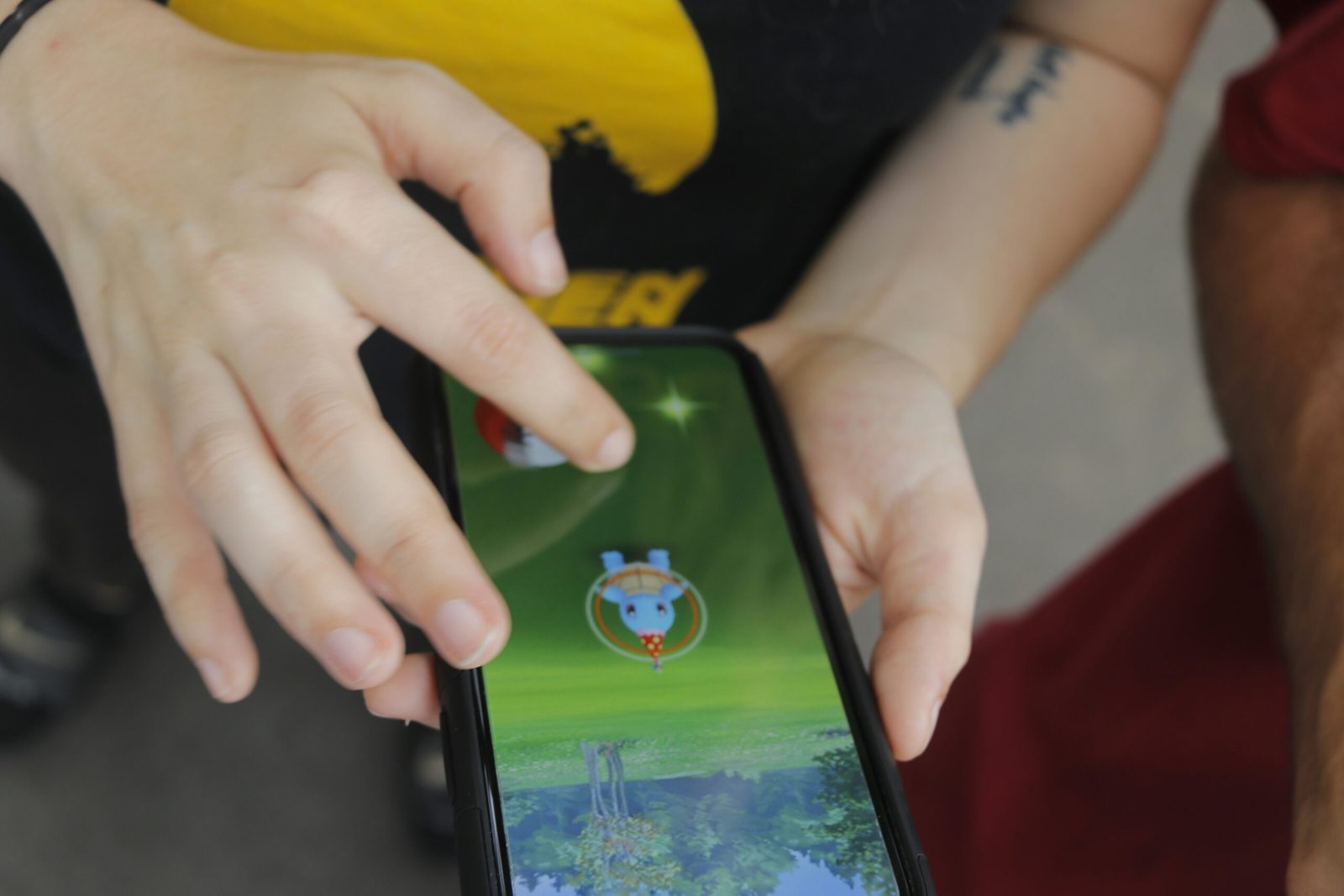“`html
Introduction to the Pokémon: Characteristics and Abilities
Within the expansive universe of Pokémon, each creature is meticulously crafted with unique characteristics and abilities that define its role and utility in the game. Understanding these elements is crucial for trainers aiming to maximize their Pokémon’s potential. This section delves into the fundamental aspects of a specific Pokémon, providing a comprehensive overview of its type, classification, and distinct abilities.
Firstly, the Pokémon’s type plays a pivotal role in determining its strengths and weaknesses in battles. For instance, a Water-type Pokémon typically has an advantage over Fire-type opponents but is vulnerable to Electric-type attacks. The classification of the Pokémon—be it Legendary, Mythical, or a common species—also influences its rarity and the kind of strategies trainers might employ.
Physical appearance is another defining characteristic. This Pokémon might exhibit a unique coloration, size, or distinctive markings that make it stand out. Such visual traits often tie into the Pokémon’s lore and backstory, enriching the player’s experience and connection to the Pokémon. Typical behaviors and natural habitat also offer insights into how this Pokémon interacts with its environment and other creatures. For example, a Pokémon that dwells in dense forests may exhibit stealthy and agile movements, while one from a volcanic region might display robust and fiery traits.
Moreover, unique abilities set each Pokémon apart from the rest. These abilities can range from passive traits that provide advantages in certain conditions to active moves that can turn the tide of a battle. Understanding these abilities enables trainers to devise effective strategies, whether for competitive play or completing the game’s storyline. Notable abilities might include immunity to specific status conditions, enhanced power during certain weather conditions, or unique moves that only this Pokémon can learn.
In essence, grasping the intricate details of a Pokémon’s characteristics and abilities is fundamental for any dedicated trainer. This knowledge not only enhances gameplay but also fosters a deeper appreciation for the rich tapestry of the Pokémon world.
Shiny Variants: Rarity and How to Obtain Them
Shiny variants, or shiny Pokémon, are a captivating aspect of the Pokémon universe, distinguished primarily by their distinct coloration compared to their regular counterparts. These unique color palettes are not simply cosmetic changes; they symbolize the rarity and exclusivity within the Pokémon community. The allure of shiny Pokémon lies in their scarcity, making them highly sought after by trainers and collectors alike.
The rarity of shiny Pokémon is underscored by the odds of encountering them in the wild. Traditionally, the probability of finding a shiny Pokémon in the wild is approximately 1 in 4,096. This daunting statistic highlights the challenge and excitement associated with acquiring these variants. However, several methods can be employed to increase the likelihood of encountering or hatching a shiny Pokémon.
One common strategy is through breeding, specifically utilizing the Masuda Method. This technique involves breeding two Pokémon from different language games. By doing so, the chances of hatching a shiny Pokémon can be significantly increased to 1 in 683. Additionally, using a Shiny Charm, an in-game item awarded for completing the Pokédex, can further enhance these odds, reducing them to 1 in 512 when combined with the Masuda Method.
Another method is shiny hunting in the wild, which can be augmented through chain encounters. This method involves repeatedly encountering the same Pokémon species, thereby increasing the chances of a shiny appearance with each successive encounter. Certain games also feature special events known as Community Days or Spotlight Hours, where specific Pokémon have a heightened chance of appearing as shiny variants.
Furthermore, some games introduce specific methods such as the PokéRadar, an item that helps in chaining encounters, or Max Raid Battles, where shiny Pokémon have a slightly increased appearance rate. These diverse techniques provide trainers with various avenues to pursue their shiny hunting endeavors effectively.
In essence, while the road to obtaining shiny Pokémon is fraught with challenges, the strategies and methods available offer a structured approach to enhancing the odds. Whether through breeding, chain encounters, or participating in special events, dedicated trainers can improve their chances of adding these rare and visually distinct Pokémon to their collections.
When it comes to competitive Pokémon play, understanding the strategic use of each Pokémon is crucial for success. A Pokémon’s strengths and weaknesses dictate its role on a team, and selecting the right moveset can significantly enhance its effectiveness in battles. Evaluating both offensive and defensive capabilities, as well as type matchups, allows trainers to craft a versatile and formidable team.
Strengths and Weaknesses
Every Pokémon has a distinct set of strengths and weaknesses. For instance, a Pokémon with high speed and attack stats is ideal for offensive roles, allowing it to outspeed opponents and deliver powerful blows. Conversely, Pokémon with robust defenses and HP can absorb hits and serve as a shield for the team. It is essential to analyze a Pokémon’s type since it determines its resistance and vulnerability to various attacks. Taking advantage of type matchups can turn the tide of battle in your favor.
Recommended Movesets
Crafting an optimal moveset is a cornerstone of competitive play. Moves should align with the Pokémon’s stats and role. For an offensive Pokémon, moves that maximize damage output, such as high base power moves or those that benefit from the Pokémon’s same-type attack bonus (STAB), are beneficial. Defensive Pokémon, on the other hand, benefit from status moves that can cripple opponents or enhance their own survivability. Movesets should also consider coverage to handle different types effectively.
Effective Strategies
To maximize potential, integrating strategies such as setting up with status moves, entry hazards, or utilizing abilities that synergize with team members is crucial. For instance, utilizing a Pokémon with the Intimidate ability can weaken opposing physical attackers, giving your team a defensive edge. Another strategy involves using a pivot Pokémon, which can switch in and out easily, maintaining momentum and providing support through moves like U-turn or Volt Switch.
Ideal Team Compositions
Complementing a Pokémon’s abilities with a well-rounded team enhances overall performance. Balance is key; combining offensive, defensive, and support roles ensures flexibility in various battle scenarios. Teams should include Pokémon that can cover each other’s weaknesses, providing a solid defense against different types and strategies. For example, pairing a Water-type Pokémon with an Electric-type can offset their respective weaknesses to Grass and Ground moves.
Format-Specific Usage
Different competitive formats, such as singles and doubles, require tailored approaches. In singles, individual matchups and one-on-one strategies are paramount. Doubles battles, however, involve more complex dynamics, such as synergy between partners and the use of moves that affect multiple targets. Online competitions often introduce unique rules and restrictions, requiring adaptability and a deep understanding of the meta-game.
Additional Uses and Cultural Impact
Beyond battles, Pokémon exhibit a multitude of uses and impacts across various aspects of the Pokémon universe and broader culture. One prominent non-battle use is in Pokémon Contests, where Pokémon are judged on their beauty, toughness, and other attributes, rather than combat abilities. These contests provide a different avenue for trainers to showcase their Pokémon’s unique traits and abilities, often requiring a blend of strategy and creativity.
Breeding is another significant application, where trainers pair Pokémon to produce offspring with desired traits, such as specific moves or enhanced stats. This aspect of the game introduces a layer of genetic planning and long-term strategy, as trainers aim to cultivate the perfect Pokémon team. Breeding also allows for the possibility of obtaining Shiny Pokémon, adding an element of rarity and excitement to the process.
In-game events and storylines frequently feature Pokémon in key roles, often driving the narrative forward or presenting unique challenges and opportunities to players. Legendary and Mythical Pokémon, in particular, are often central to these storylines, their lore and abilities weaving into the fabric of the game’s world and history. These narrative elements enrich the gaming experience, making Pokémon more than just battle companions.
The cultural impact of Pokémon extends far beyond the games themselves. The Pokémon anime and movies have played a significant role in popularizing various Pokémon, embedding them into the hearts and minds of fans globally. Iconic Pokémon like Pikachu have become cultural symbols, recognized even by those with minimal exposure to the franchise. These media forms often explore the personalities and stories of Pokémon, providing deeper character development and emotional connections for fans.
Merchandise, ranging from toys and clothing to home decor, further cements Pokémon’s presence in everyday life. Collectibles and memorabilia allow fans to express their passion for the franchise in tangible ways, fostering a sense of community among enthusiasts. Notable moments, such as the release of the Pokémon GO app, have had substantial influences on popular culture, demonstrating the enduring appeal and adaptability of Pokémon across different media and generations.





